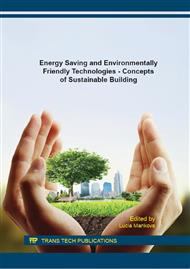p.761
p.770
p.779
p.786
p.795
p.803
p.811
p.821
p.829
Extensive Roof Green in Central European Climate
Abstract:
The essence of the green roof is vegetation and its positive health and aesthetic effects on humans. They can, however, only be achieved, if the vegetation is really functional. In climatic conditions of Central Europe with four seasons of the same length, approximately, with cold winters and relatively warm, and often dry, summers are plants in artificial conditions, for which the vegetation of the roof can be considered, subject to extreme temperature variations. Even plants typical for central European area that thrive in this environment can be difficult to survive. In contrast to the plants rooted in the usual field, the temperature of which oscillates during the year at a depth of one meter under the surface between 0° and approx. 16° Celsius, i.e. in the range of approx. 16 Kelvin, the roots of vegetation planted on roofs are exposed to a much wider temperature range. The study to be presented describes an example of a typical roof with extensive greenery and shows the temperature course in substrate of the roof vegetation during a typical winter and summer day and compares it to the temperature course at the same depth below the field surface. It also provides methods that can solve this problem, from the selection of suitable plant species through year-round care, e.g. using summer irrigation and winter protection, up to artificial creation of a constant temperature of natural substrate with heated / cooled ceilings under the roof.
Info:
Periodical:
Pages:
795-802
Citation:
Online since:
January 2016
Authors:
Keywords:
Price:
Сopyright:
© 2016 Trans Tech Publications Ltd. All Rights Reserved
Share:
Citation:


